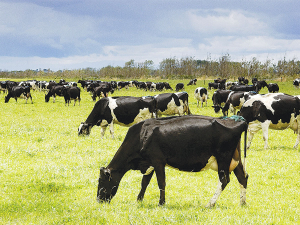It's all about economics
OPINION: According to media reports, the eye-watering price of butter has prompted Finance Minister Nicola Willis to ask for a 'please explain' from her former employer Fonterra.
 While greenhouse gas emissions are up, according to the latest statistics, agriculture, forestry and fishery saw a significant decrease in emissions.
While greenhouse gas emissions are up, according to the latest statistics, agriculture, forestry and fishery saw a significant decrease in emissions.
As farmers and tractors took to New Zealand’s motorways, towns and cities to protest the pricing of agricultural emissions, Stats NZ released the country’s quarterly greenhouse gas emissions figures.
The figures, which track the March 2022 quarter (January 2022 – March 2022), revealed the seasonally adjusted greenhouse gas (GHG) emissions had increased 1.7% on the previous quarter.
Agriculture, forestry and fishing saw the largest decrease, however, in emissions, down 0.8%.
Meanwhile, Stats NZ says electricity generation and manufacturing were the main culprit for the rise.
“One of the main sources of fluctuation in New Zealand’s total emissions is the variation in the energy sources used for electricity generation,” says Stats NZ environmental-economic accounts manager Stephen Oakley.
“The increase and then decrease in renewable share of electricity generation over the last two quarters has continued to create volatility in New Zealand’s overall production of emissions,” Oakley says.
A New Zealand dairy industry leader believes the free trade deal announced with India delivers wins for the sector.
The Coalition Government will need the support of at least one opposition party to ratify the free trade deal with India.
Primary sector leaders have welcomed the announcement of a Free Trade Agreement between India and New Zealand.
At Pāmu’s Kepler Farm in Manapouri, mating has wrapped up at the across-breed Beef Progeny Test.
More than 150 people turned up at Parliament recently to celebrate the 20th anniversary of Horticulture New Zealand (HortNZ).
Biosecurity New Zealand says Kiwis should continue to keep an eye out for yellow-legged hornets (Vespa velutina) over the holiday season.